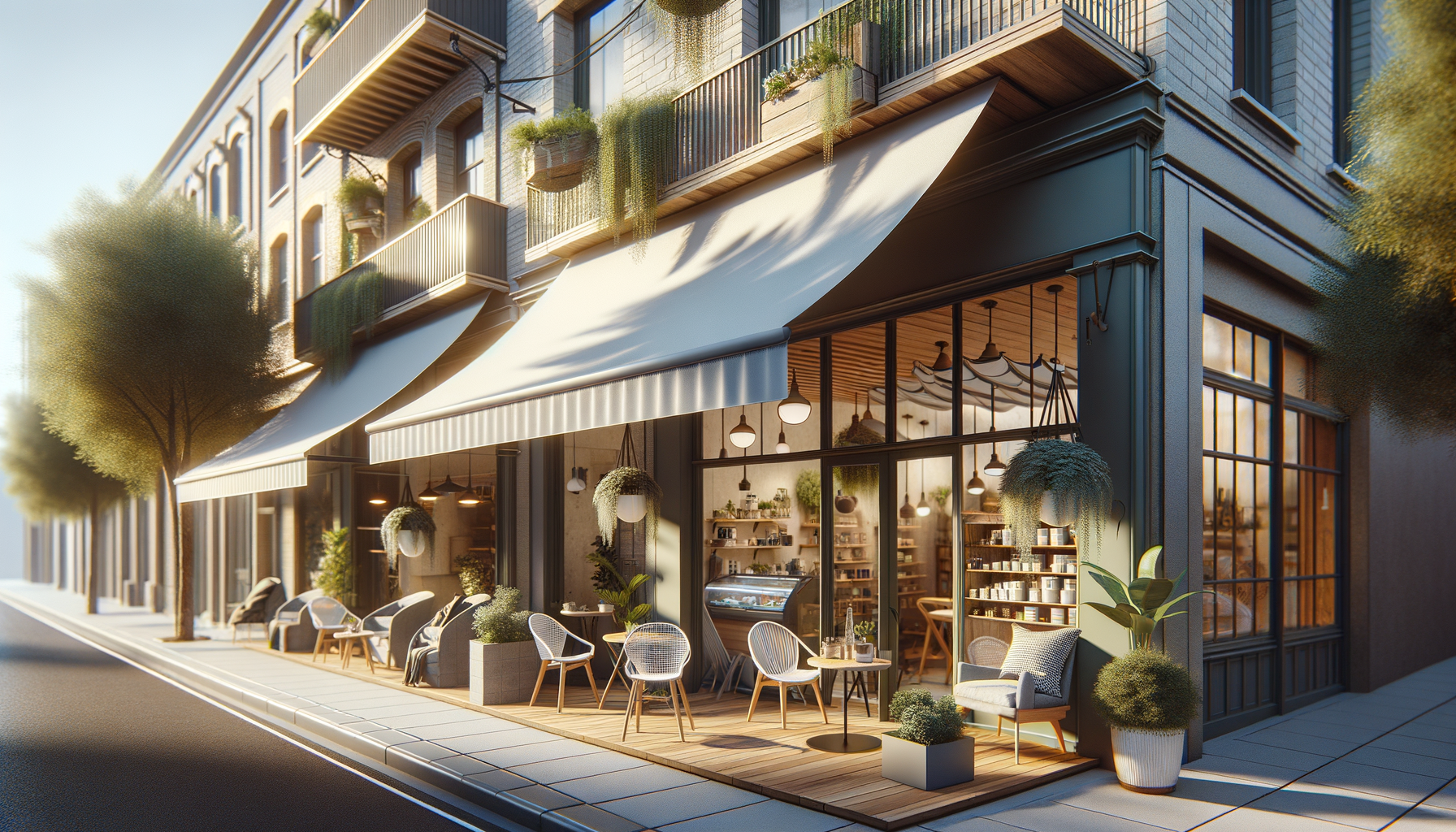The Practical Benefits of Awnings & Overhangs
Awnings and overhangs are not just decorative elements; they serve practical purposes that can significantly enhance the functionality of a building. One of the primary advantages is their ability to provide shade, which can lead to energy savings. By blocking direct sunlight, these structures help to maintain cooler indoor temperatures, reducing the need for air conditioning during hot months. This can result in substantial energy savings, making them an environmentally friendly choice.
In addition to energy efficiency, awnings and overhangs protect against weather elements such as rain and snow. They create a sheltered space over windows and doors, preventing water from seeping into the building and causing damage. This protection extends the lifespan of the structure’s exterior and can reduce maintenance costs over time.
Furthermore, these structures can enhance outdoor living spaces. By providing a covered area, they allow for the enjoyment of patios and decks regardless of weather conditions. This can be particularly beneficial for homes and businesses looking to maximize their outdoor usability.
The Aesthetic Impact of Awnings & Overhangs
Beyond their functional benefits, awnings and overhangs contribute significantly to the aesthetic appeal of a building. They offer a way to add character and style, transforming a plain façade into something visually striking. Available in a variety of materials, colors, and designs, they can be customized to complement the architectural style of any building.
For instance, traditional awnings with scalloped edges can evoke a classic, timeless look, while sleek, modern designs can enhance contemporary structures. The choice of material—be it fabric, metal, or glass—also plays a crucial role in defining the aesthetic. Each material brings its own texture and finish, allowing for creative expression in architectural design.
Awnings and overhangs can also serve as focal points, drawing attention to specific areas of a building, such as entrances or large windows. By doing so, they not only enhance curb appeal but also create a welcoming atmosphere for visitors and passersby.
Design Considerations for Awnings & Overhangs
When designing awnings and overhangs, several factors must be considered to ensure they meet both functional and aesthetic goals. The orientation of the building is crucial, as it influences the amount of sunlight and weather exposure the structure will face. South and west-facing sides typically receive the most sunlight, making shading particularly important in these areas.
Material selection is another critical aspect. While fabric awnings are popular for their versatility and ease of installation, metal and glass options offer greater durability and a modern aesthetic. The choice of material will depend on the desired look, budget, and maintenance considerations.
Additionally, the size and scale of the awning or overhang should be proportionate to the building. Oversized structures can overwhelm a small façade, while undersized ones may not provide adequate coverage. It’s essential to strike a balance that ensures both functionality and visual harmony.
Environmental Impact and Sustainability
In today’s environmentally conscious world, the sustainability of building materials and designs is more important than ever. Awnings and overhangs can contribute to a building’s green credentials in several ways. By reducing the need for artificial cooling, they help lower energy consumption, which in turn reduces the building’s carbon footprint.
Moreover, many awning materials are now available in eco-friendly options. Fabrics made from recycled materials or sustainably sourced metals are increasingly being used in construction. These materials not only minimize environmental impact but also often offer enhanced durability and performance.
Another aspect of sustainability is the longevity of the structure itself. Well-designed awnings and overhangs can protect a building from weather-related wear and tear, reducing the need for repairs and replacements. This longevity means fewer resources are consumed over the building’s lifetime, further contributing to environmental sustainability.
Cost Considerations and Return on Investment
While the initial cost of installing awnings and overhangs can vary based on materials and design complexity, they often offer a significant return on investment. The energy savings achieved through reduced cooling costs can quickly offset the upfront expense. Additionally, the protection they offer against weather damage can lead to savings on maintenance and repair costs.
For businesses, awnings and overhangs can also enhance the customer experience by providing comfortable outdoor areas, potentially increasing foot traffic and sales. In residential settings, they can add to the property’s value by improving curb appeal and expanding usable outdoor space.
When considering the installation of awnings and overhangs, it’s essential to weigh these long-term benefits against the initial investment. In many cases, the advantages they provide in terms of energy efficiency, protection, and aesthetic enhancement make them a worthwhile addition to any building.








